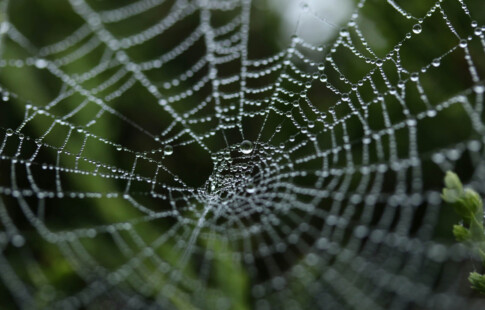
Building Ecological Resilience Through Sustainable Practices
We are reader-supported. When you buy through links on our site, we may earn affiliate commission.
Ecological resilience refers to an ecosystem’s ability to recover and adapt after disruptions like wildfires, floods or human interference. Today — where climate change, pollution and habitat destruction are accelerating — this resilience is crucial. When ecosystems lose their strength, the ripple effects touch everything from clean water and air to food security and public health.
That’s where sustainable practices become essential. By supporting biodiversity, conserving natural resources and reducing environmental impact, these practices help strengthen the systems that keep nature thriving. The more resilient an ecosystem is, the better it can protect the planet and the people who depend on it.
What Is Ecological Resilience?
Resilient ecosystems have the remarkable ability to recover after natural disasters like wildfires, floods or long-term human impact. While resistance is an ecosystem’s capacity to withstand a disturbance, resilience is its ability to bounce back once the stress is gone. This recovery depends on several factors — healthy soil, clean and connected water systems and a wide range of plant and animal life. The more diverse and balanced an ecosystem is, the better it can adapt, rebuild and continue to function after disruption.
A great example of this is the wetland ecosystem. Wetlands can absorb heavy rainfall, reduce flood damage and naturally filter water. After extreme weather events, they often recover quickly because of their rich biodiversity and strong root systems. These features help stabilize the land, support wildlife and keep water supplies clean. That kind of natural recovery power is exactly what makes ecological resilience so important in a changing world.
The Connection Between Sustainability and Resilience
Sustainability helps maintain balance in nature by reducing the strain human activity places on ecosystems. Choices like supporting organic farming, cutting back on single-use plastics and switching to renewable energy all contribute to healthier soil and stronger biodiversity.
These small lifestyle changes have a big impact — especially when done collectively. Today, over 95% of the rapid rise in global temperatures can be traced back to human activity, mostly from burning fossil fuels and releasing greenhouse gases. That warming disrupts ecosystems, weakens natural defenses and makes recovery from disturbances much harder.
By embracing more sustainable habits, people protect the environment and support long-term health and well-being. Cleaner energy reduces pollution, organic farming preserves soil life and less waste helps keep waterways clear and safe. These actions work together to strengthen the natural systems that support life. In the long run, sustainability creates a ripple effect — helping the planet and future generations thrive.
Sustainable Practices That Boost Ecological Resilience
Building ecological resilience starts with the everyday choices people make to live more sustainably. From how they grow food to how they use water, certain practices can directly strengthen the natural systems that keep ecosystems healthy and adaptable.
Regenerative Agriculture
Sustainable agriculture is a powerful way to boost ecological resilience by improving soil health, reducing erosion and supporting essential pollinators. With agriculture responsible for over 10% of global greenhouse gas emissions, adopting eco-friendly farming methods is more important than ever.
Practices like composting enrich the soil with nutrients, while crop rotation helps prevent pest buildup and keeps the land fertile. Cover crops protect the soil between growing seasons, reduce runoff and attract beneficial insects. These simple, time-tested techniques lower agriculture’s environmental impact and create stronger, more adaptable ecosystems that can thrive long-term.
Water Conservation and Management
Water-wise practices support resilient ecosystems, especially in the face of increasing droughts and water shortages. Rainwater harvesting allows communities to collect and store rain for later use, easing the demand for natural water sources.
Greywater systems take gently used water from sinks, showers and laundry and safely repurpose it for landscape irrigation. Wetland restoration brings back natural spaces that absorb floodwaters, filter pollutants and provide vital habitats for wildlife. These sustainable water strategies help protect local ecosystems, conserve valuable resources and create healthier environments for nature and people.
Native Plant Landscaping
Planting native species is one of the easiest and most effective ways to support ecological resilience at home. Native plants are naturally adapted to local conditions, which means they use less water, resist pests without chemicals and support a wide variety of local wildlife.
Yards with native plants often grow more healthy vegetation and produce food, shelter and breeding grounds for birds and other pollinators. Unlike exotic or ornamental plants, native varieties strengthen the entire ecosystem by fitting seamlessly into the local environment. Choosing native over non-native plants is a simple switch that can make a lasting impact on biodiversity and sustainability.
Reducing Carbon Footprint
Making conscious lifestyle choices — like using clean energy, eating less meat and driving less — can reduce environmental stress and strengthen ecological resilience. For example, beef makes up only 4% of food sold in the U.S. but is responsible for 36% of the country’s food-related greenhouse gas emissions.
Shifting toward plant-based meals, using solar or wind power, and choosing public or low-emission transportation can lower carbon output and reduce the strain on ecosystems. These changes help slow climate change, which in turn lessens the frequency and severity of extreme weather events. By reducing pressure on the planet, individuals help create more stable, resilient environments for all living things.
Everyday Actions That Make a Difference
Building ecological resilience starts with small, practical steps — and many of them are easy, affordable and accessible. Buying local produce is a simple way to cut down on transportation emissions while supporting nearby farmers who often use sustainable growing methods.
Making zero-waste swaps — like switching to reusable bags, containers and compost bings — reduces landfill waste and helps keep ecosystems cleaner and healthier. These choices may seem minor, but they add up quickly when more people take part.
Community gardens are another powerful way individuals can contribute. They provide fresh, local food, reduce reliance on industrial agriculture and turn unused spaces into thriving green hubs. These gardens also bring people together, spark interest in sustainable living and help reconnect communities with the environment. When individuals take small actions toward sustainability, they contribute to a larger movement that helps ecosystems recover, adapt and thrive.
Why Everyday Choices Make a Huge Impact
Every lifestyle choice — no matter how small — has the power to support or strain the environment. By choosing sustainable habits, individuals play a direct role in building a more resilient and balanced planet.
Share on
Like what you read? Join other Environment.co readers!
Get the latest updates on our planet by subscribing to the Environment.co newsletter!
About the author

Jane Marsh
Starting from an early age, Jane Marsh loved all animals and became a budding environmentalist. Now, Jane works as the Editor-in-Chief of Environment.co where she covers topics related to climate policy, renewable energy, the food industry, and more.





